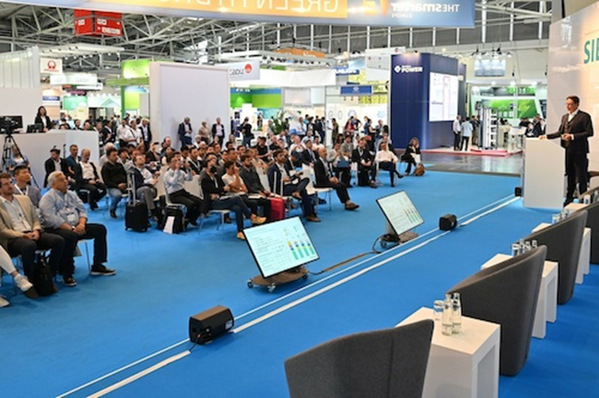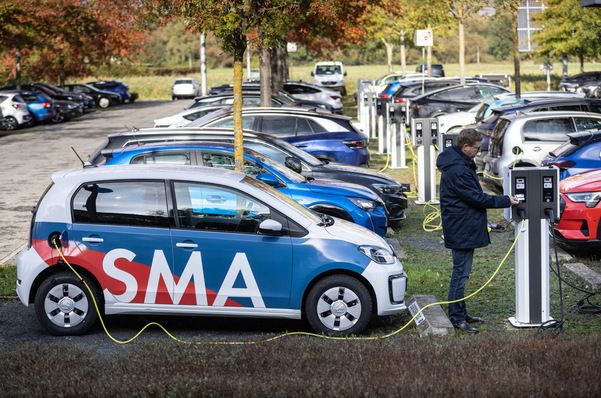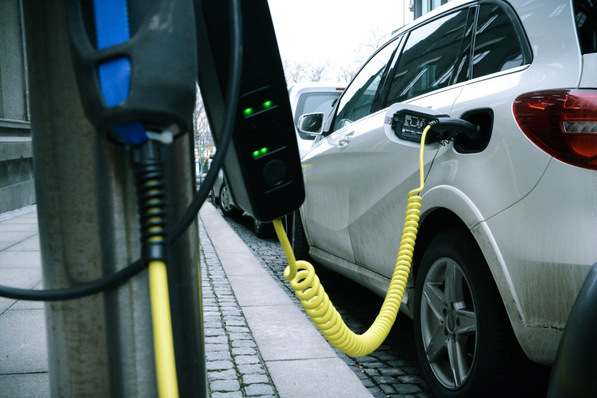When planning to buy an electric car, it is important to consider beforehand how that car is going to be charged. If one is clever about it, the garage can turn into a private filling station. And the fuel savings can contribute to paying off a self-consumption solar installation including a storage battery even faster. But the charging technology has to be compatible with the car.
Generally speaking, there are two types of charging technology for EVs. It is possible to charge a car with direct current (DC) or with alternating current (AC). For AC, vehicles have either a Type 1, Type 2 or a GB/T 20234.2 charging socket (the last only in China). For DC, a there is CCS (Combined Charging System, also known as Combo 1 or Combo 2) or Chademo.
What type are you?
Type 1 AC charging is not used in Europe, but rather in countries where the mains voltage is 100 to 120 volts (North America, some Asian countries). The charging plug is round in profile and has a locking mechanism. Type 1 plugs only work for single-phase charging and the charging output is limited to 7.4 kilowatts. To charge a typical EV battery with a capacity of 22 kilowatt hours would take more than three hours.
Because Europe has 230 volts mains voltage, Type 2 charging technology is common. Visually the plugs are distinct for being flat at the top and for lacking a locking mechanism. EVs with a Type 2 socket can be charged both in single-phase and three-phase mode. The maximum charging output is much higher and thus the charging duration is shorter. At a Type 2 charging station (43 kilowatts) a 22-kilowatt hour battery can be charged within half an hour.
However, many EVs are limited in the output they can tolerate. They can only take 3.7 kilowatts AC to charge their batteries. In that case, charging can take a long time. A faster method is DC chargers that have a three-phase connection and therefore allow much higher outputs (Supercharger). These can be commonly found at motorway service stations and allow charging 80 percent of the battery in 30 minutes.
Two standards for DC systems
For DC systems there are two standards: Chademo and CCS. Chademo was developed in Japan in 2009. As time passed – due to carmakers like Toyota, Mitsubishi or Nissan – EVs with Chademo sockets also became common in Europe and America. Charging stations of this type were also built outside of Japan.
CCS charging stations are versatile: They can charge in AC as well as DC. That way, a car with a CCS socket can be charged at either an AC or a DC charging station. Another advantage of the Combo plugs is the higher output: A Chademo plug is good for 50 kilowatts, in contrast to 200 kilowatts from a Combo plug.A three-phase socket is perfectly sufficient
A three-phase socket is perfectly sufficient
We are focussing on charging technology for a domestic setting. In principle one should equip the garage with three-phase power, or high-voltage current (400 volts). The fuse protection of the rest of the house is usually set to 16 amperes, sometimes also 20 or 32 amps. At 16 amps, it is possible to charge at a little over six kilowatts. That is entirely enough to charge an EV overnight.
In a private property, a three-phase socket is perfectly sufficient. Wall-mounted wall boxes or stand-alone charge points are more useful in public spaces, in car parks or outside of hotels and companies. In addition to the electrical power, a system for payment is usually needed – by card or RFID. This is of course not necessary for private users in their own garage. (HS)
Read more about energy storage
Stay informed, get our free newsletter twice a week. Register here.







